Meeting Worker Safety Amid Rising Logistics Demand Requirements in Indonesia with Automated Pallet Exchange
The logistics landscape in Indonesia is growing at an incredible pace. With this growth comes immense pressure on warehouses and production facilities to move goods faster than ever. But this speed often comes at a cost. I see companies pushing their teams to handle heavy pallets manually, leading to a dangerous and inefficient work environment. You worry about your people, the risk of injury, and the bottlenecks that slow down your entire operation. The financial and human cost of a single workplace accident can be staggering, from compensation claims and lost productivity to a drop in team morale. It feels like you have to choose between speed and safety. But there is a better way. Automated pallet exchange systems offer a powerful solution, allowing you to increase your throughput while protecting your most valuable asset: your workers.
Automated pallet exchange systems are the solution to meeting both worker safety standards and rising logistics demand in Indonesia. They achieve this by removing the need for manual lifting, which drastically reduces the risk of physical injury. These machines automate the transfer process, making it faster, more consistent, and capable of running continuously. This boosts efficiency and throughput, allowing companies to keep up with market demands while creating a safer, more compliant workplace.
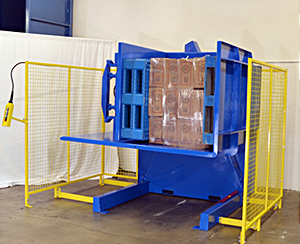
This might sound like a significant change, especially if your operations are built on traditional, manual processes. I understand that. But in my years as an engineer and later as a factory owner, I have seen firsthand how automation can completely transform a business. The benefits go far beyond just moving things faster. It's about building a foundation for a safer, more reliable, and more profitable operation. Let's look closer at how this technology works and why it is becoming essential for businesses in demanding environments like Indonesia.
How Does an Automated Pallet Exchanger Directly Improve Worker Safety?
You see your team on the floor, manually moving heavy, awkward loads from one pallet to another. With every lift and twist, there is a risk of a serious back injury. You are constantly concerned about their well-being and the potential liability for your company. A single accident can result in high costs from downtime, insurance claims, and damage to your company's reputation as a safe place to work. Good, experienced employees might choose to leave, and overall productivity will surely suffer. An automated pallet exchanger solves this by removing the human from the most hazardous part of the task. It does the heavy lifting, so your team doesn't have to.
An automated pallet exchanger directly improves worker safety by completely eliminating the need for manual handling of heavy or unstable loads. The machine uses mechanical clamps and controlled movements to secure, tilt, and transfer goods between pallets. This process removes the primary causes of workplace injuries like musculoskeletal damage, strains, and sprains that come from lifting, bending, and twisting. It creates a predictable, controlled environment that reduces accidents caused by human fatigue or simple mistakes.
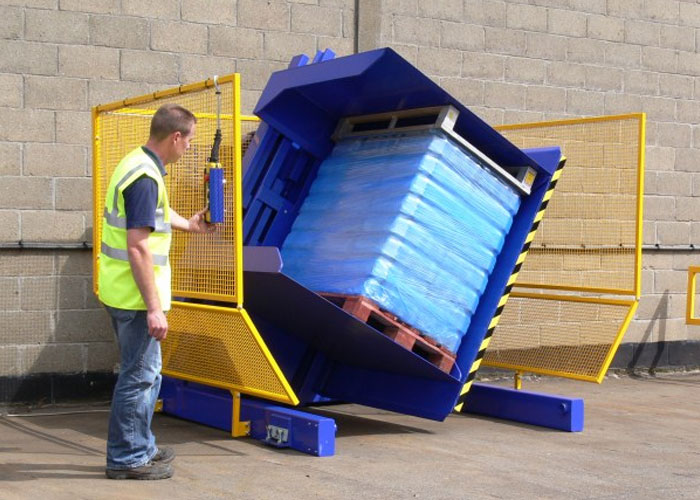
The Mechanics of a Safer Process
Let's break down the difference. In a manual operation, two workers might struggle to re-stack a pallet, item by item, or try to manually slide a heavy load. The process is slow, uncontrolled, and full of risk variables. An automated system, like a pallet inverter, clamps the load securely from the top and bottom. It then rotates the entire load 180 degrees. The original pallet is now on top, ready to be removed and replaced. The process is reversed, and the load is now safely on the new pallet. It is all done within a safety cage, keeping workers away from the moving parts. This mechanical precision removes the physical strain and potential for human error.
It's More Than Just Back Injuries
While back injuries are the most common, manual pallet handling presents many other dangers. Workers can suffer from crushed feet or hands if a load shifts unexpectedly. Objects can fall from a poorly stacked pallet. Over time, the repetitive motion of lifting and moving, even with lighter loads, can lead to chronic repetitive strain injuries (RSI) in the shoulders, arms, and wrists. I remember early in my career, we had a dedicated worker who developed a chronic shoulder issue from years of this kind of work. He was a great employee, but the job literally wore him down. Automation prevents these long-term health issues, creating a more sustainable career for your employees and a more stable workforce for you. As Indonesia's economy continues to develop, its workplace safety regulations will only become stricter. Investing in safety automation now is not just a proactive measure; it's a strategic decision that prevents future fines, legal issues, and operational shutdowns.
Manual vs. Automated Safety Risk Comparison
| Risk Factor | Manual Pallet Handling | Automated Pallet Exchange |
|---|---|---|
| Musculoskeletal Injury | High (Lifting, Bending, Twisting) | Eliminated |
| Repetitive Strain Injury | High | Eliminated |
| Crushing/Impact Injury | Medium (from shifting/falling loads) | Low (Contained within a safety cage) |
| Human Error/Fatigue | High | Low (Programmed, consistent operation) |
| Process Control | Low | High |
What are the Key Benefits for Meeting Rising Logistics Demand?
The orders are coming in faster than ever. Your customers in Indonesia and across the region have strict deadlines, but your manual processes are creating a major bottleneck at the end of your production line. You simply cannot get products palletized and shipped out fast enough to keep up. These delays lead to frustrated customers, who may start looking at your competitors. You are missing out on valuable growth opportunities because your logistics operations cannot match the speed of your production. Automation is the key to breaking through this barrier, unlocking the speed and efficiency you need to meet and even exceed market demand.
The primary benefits of using an automated pallet exchange to meet rising logistics demand are speed, consistency, and the ability to operate continuously. These systems can transfer a full pallet load in a minute or less, a task that could take several workers many minutes to complete manually. They can run 24/7 without getting tired or needing breaks. They can also be integrated directly into automated production and conveyor lines. This capability significantly increases your overall throughput and ensures you can meet delivery deadlines reliably.
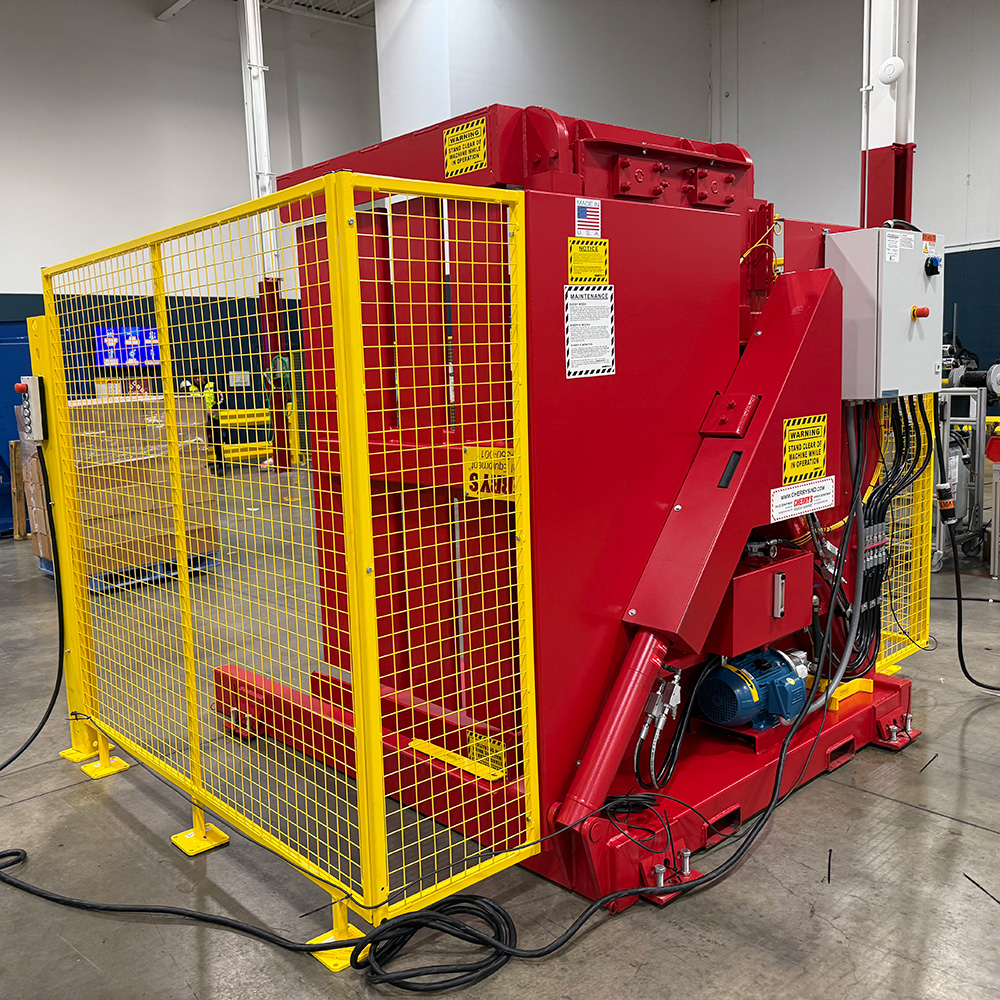
Unlocking Speed and Throughput
The numbers tell a clear story. A manual pallet exchange, involving de-stacking and re-stacking, can take two workers anywhere from 5 to 15 minutes, depending on the load. An automated pallet inverter can complete the entire cycle in about 60 seconds. This is a massive increase in speed. If you need to switch 100 pallets in a day, a manual process could take up to 25 man-hours. An automated system could do it in less than two hours, with only one supervisor overseeing the process. This frees up your workers to focus on more value-added tasks like quality control and order preparation, rather than pure manual labor. This directly addresses the challenge of meeting rising demand in a competitive market like Indonesia.
The Power of 24/7 Operation and Integration
I have worked with many factory owners who, like Javier Morales, have invested heavily in optimizing their core production. They have high-speed machinery and efficient processes. But then, everything hits a wall at the final packaging and shipping stage. The end of the line becomes the single biggest bottleneck. It is like building a massive, multi-lane highway that suddenly ends at a narrow, single-lane bridge. An automated pallet exchanger effectively widens that bridge. Because it can run 24/7 and integrates with other automated systems like conveyors and AGVs, it creates a smooth, continuous flow from production to the shipping dock. This prevents your expensive production machinery from having to stop simply because the packaging area is backed up. This is critical for achieving high capacity utilization goals, like the 95% target Javier aims for.
Performance Metrics: Manual vs. Automated
| Metric | Manual Pallet Handling | Automated Pallet Exchange |
|---|---|---|
| Cycle Time per Pallet | 5-15 minutes | < 1 minute |
| Operational Hours | Limited by worker shifts (8-16 hours) | 24/7 capability |
| Labor Requirement | 2+ workers per station | 1 supervisor for multiple machines |
| Consistency & Quality | Variable, risk of product damage | High, gentle and controlled handling |
| Data for MES/WMS | None | Yes (cycle counts, uptime, faults) |
How do you choose the right automated pallet exchange system for your needs?
You are now convinced that automation is the right path for your operation. But when you start to research, you are faced with a confusing array of options: pallet inverters, pallet changers, pushers, and more. How do you know which machine is the right one for your specific product, your available space, and your budget? Making the wrong choice can be a very expensive mistake. You could end up with a machine that damages your goods, cannot handle your throughput, or simply does not fit into your facility's layout. You would be stuck with a large piece of equipment that fails to solve your core problem. The key is to systematically analyze your needs and match them to the right technology.
To choose the right automated pallet exchange system, you must first perform a careful analysis of your specific application. Consider the type of load you are handling—its weight, dimensions, stability, and fragility. Next, determine your required throughput, meaning how many pallets you need to process per hour or per day. Finally, assess your available factory floor space. Once you have this information, you can effectively evaluate the different types of machines, such as robust pallet inverters for durable goods or gentle side-clamping pallet changers for more delicate items. This ensures the solution you select is a perfect fit for your operational needs.
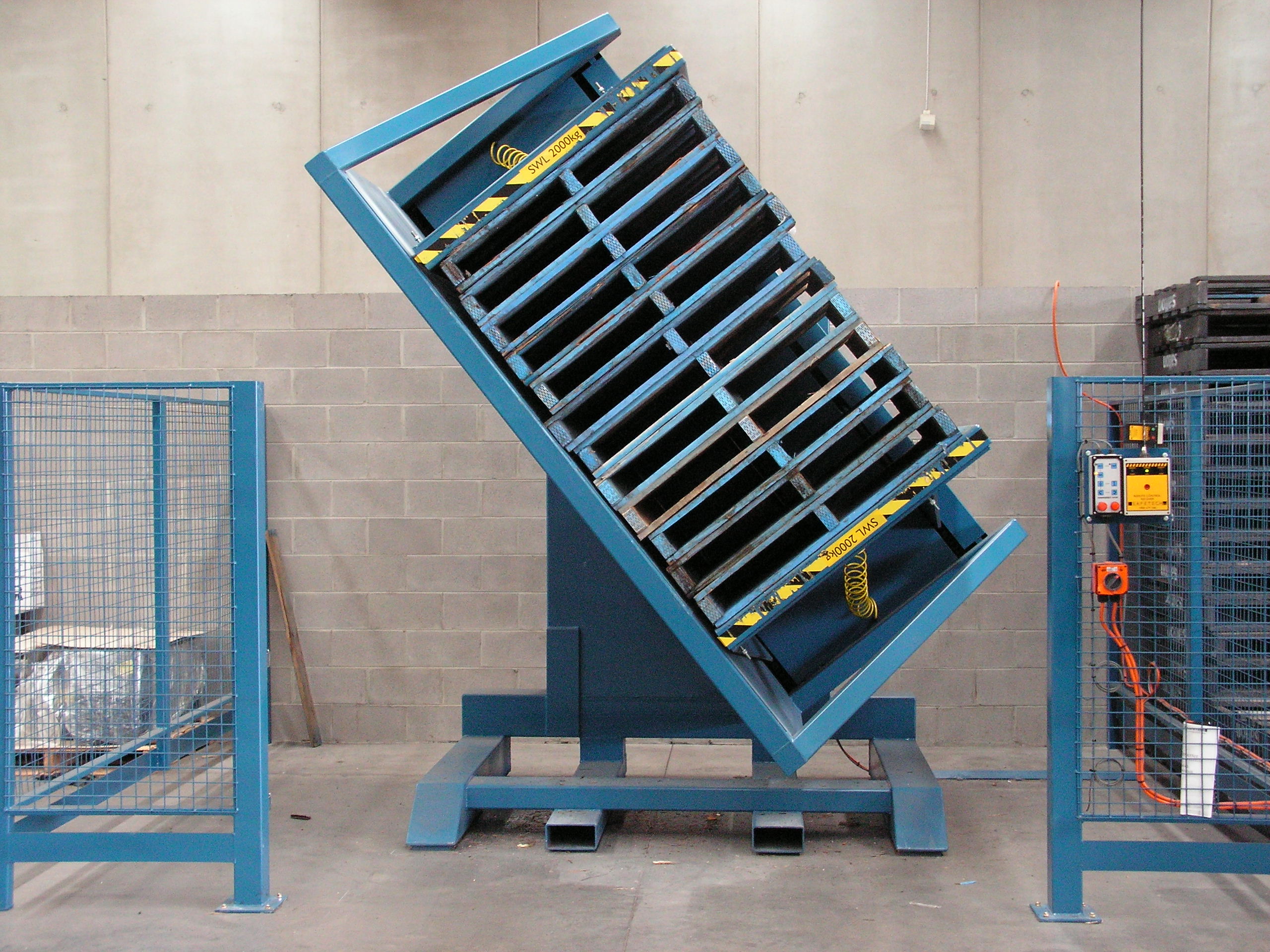
Start by Understanding Your Load
The very first question I always ask my clients is, "Tell me about what you are moving." This is the most critical factor in the decision.
- Weight, Size, and Shape: This is the basic starting point. It determines the required load capacity and dimensions of the machine. A machine designed for light boxes will fail if used for heavy steel parts.
- Stability: Is your product a solid block, or is it a collection of smaller items? Is it neatly boxed, or is it in bags that can shift? A stable, uniform load can be handled by simpler systems. An unstable or irregularly shaped load requires a machine with more robust clamping capabilities.
- Fragility and Orientation: This is a crucial detail. Can your product be tilted or turned upside down? For rugged goods like bagged cement or plastic resins, a 180-degree pallet inverter is perfect. But for products like glass bottles, sensitive electronics, or pails of liquid, inversion would be a disaster. These loads require a system that keeps them upright throughout the transfer.
Matching the Machine to the Application
Once you understand your load, you can look at the main types of systems:
- Pallet Inverters: These are the industry workhorses. They clamp the load, rotate it 180 degrees, and allow for a quick and easy pallet swap. They are ideal for strong, stable loads and are known for their reliability and cost-effectiveness. I have installed many of these in heavy industries like steel, chemicals, and building materials.
- Pallet Changers: These systems are designed for sensitive or non-invertible loads. Instead of rotating, they typically use side clamps to secure the load and lift it slightly off the pallet. The original pallet is then slid out, and a new one is slid in. They are more complex but essential for industries like food and beverage, pharmaceuticals, and electronics.
- Pusher Systems: These are high-speed solutions often found integrated into conveyor lines. A large plate simply pushes the entire product layer from one pallet to the next. This method is very fast but requires the load to be perfectly flat on the bottom and stable enough to be pushed without falling apart.
System Selection Guide
| System Type | Best For | Key Consideration | Common Industry |
|---|---|---|---|
| Pallet Inverter | Robust, stable, invertible loads (sacks, boxes, drums) | Can the product be safely turned upside down? | Steel, Chemical, Agriculture |
| Pallet Changer | Sensitive, unstable, or non-invertible loads | Higher mechanical complexity and cost | Food & Beverage, Pharmaceutical |
| Pusher System | Very stable, uniform, slippery-bottomed loads | Requires integration with conveyor lines | High-Volume Distribution Centers |
My Perspective for a Leader Like Javier: Beyond the Machine
As a steel mill owner or a leader in a demanding industry, you are not simply buying a piece of equipment. You are making a strategic investment. This investment must deliver a clear return, improve the safety and well-being of your team, and align with your long-term vision for digitalization and cost control. A basic supplier might sell you a machine and then disappear. They won't understand the unique challenges of your environment—the heat, the dust, the round-the-clock operations, and the absolute need for reliability. A partnership with the wrong supplier can delay your goals and create more problems than it solves. What you truly need is a partner who has walked in your shoes, who understands the realities of the factory floor, and who is committed to providing a total solution, not just a product.
For a forward-thinking leader, the true value of automated pallet exchange is not in the steel of the machine itself, but in its strategic impact on the entire business. It is a powerful tool for de-risking your operations by fundamentally improving worker safety. It is a catalyst that helps you achieve ambitious targets for cost reduction and efficiency. And it is a critical, data-producing node in the journey toward a fully integrated, digitalized, and visible production ecosystem.
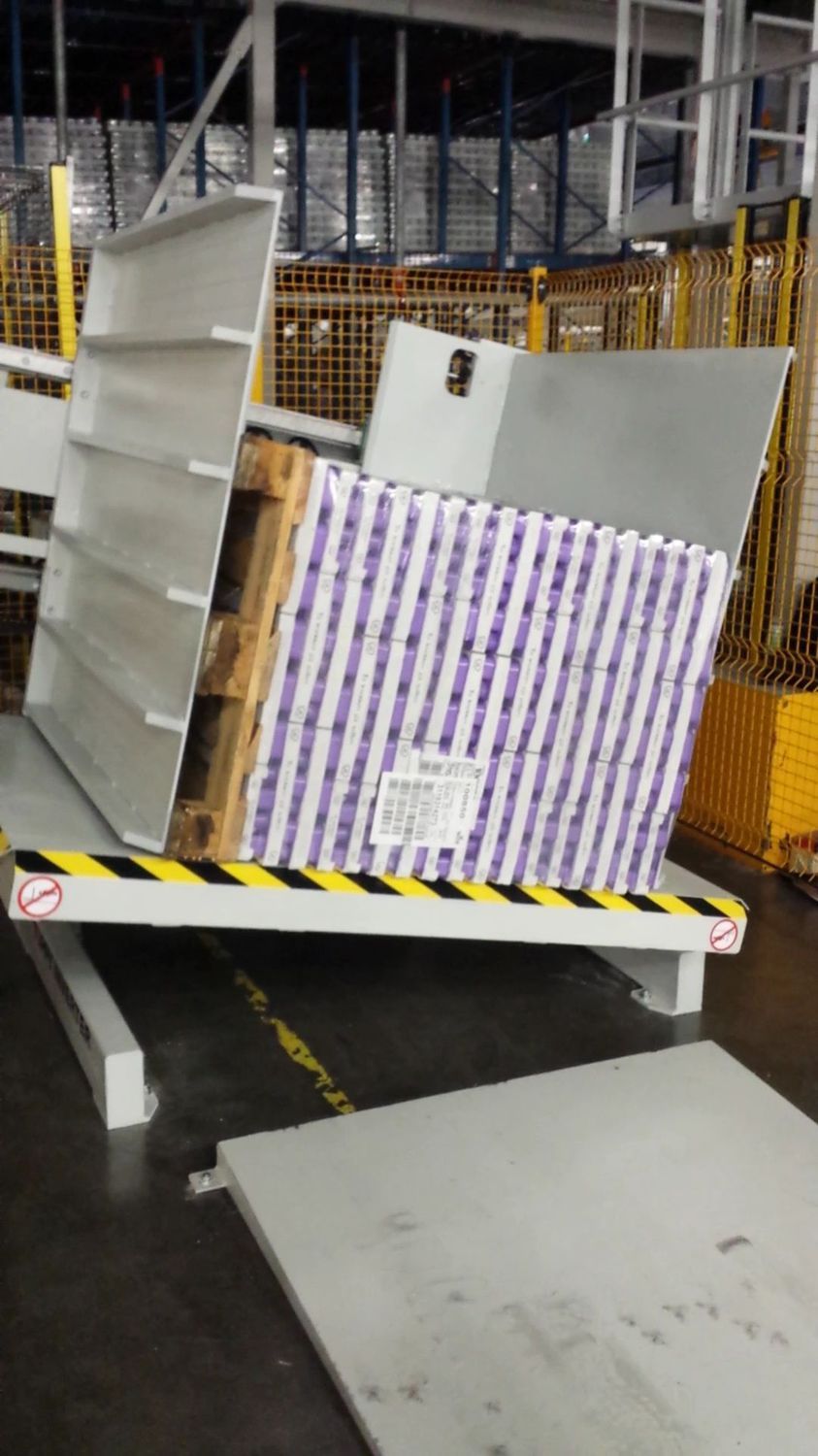
A Partner Who Understands Your Goals
Your profile, Javier, shows me you are a leader who looks to the future. You have built an impressive operation and you know that real, sustainable growth comes from smart investments. My own journey started on the factory floor. I worked as an engineer, and I later built my own factory from the ground up. I know the pressures of managing costs, meeting deadlines, and ensuring the safety of the team that depends on you. That is why our slogan at SHJLPACK is "TOTAL SOLUTION FOR WRAPPING MACHINE." It is a promise that we look at your entire problem, not just one piece of it.
Let's connect this to your specific goals:
- Lowering Operating Costs (Goal: 8% Reduction): Investing in safety is a direct path to cost reduction. A single serious injury can have financial repercussions that wipe out months of other savings. Automation brings predictable operational costs. It eliminates the need for overtime for manual handling and drastically reduces workers' compensation claims. It also minimizes product damage during transfers. All of these factors contribute directly to your 8% goal.
- Advancing Digital Transformation: An automated pallet exchanger is not an isolated piece of machinery. It is a source of valuable data. It can tell your Manufacturing Execution System (MES) exactly how many pallets are being processed, what the cycle times are, and its operational status. This data is a vital component for achieving the comprehensive production visualization you are aiming for. A true partner helps ensure this integration is seamless.
- Tackling Energy Costs: While a pallet exchanger itself is not a major energy user, its role in system optimization is huge. By eliminating logistics bottlenecks, it ensures your truly energy-intensive equipment—like your furnaces and production lines—can run smoothly and continuously at their most efficient rate. It prevents the wasteful stop-start cycles that drain energy and hurt productivity. It is about making the entire system more efficient.
The most valuable lesson I have learned is that the best investments are the ones that solve multiple problems at the same time. An automated pallet exchange system does just that. It addresses safety, it meets demand, and it provides the data you need for a smarter, more efficient future. It is a pragmatic, high-return solution that I know a leader like you can appreciate.
Conclusion
Automating your pallet exchange process is a powerful move. It protects your team, meets growing logistics demands, and delivers a clear return on investment for any modern industrial operation.



